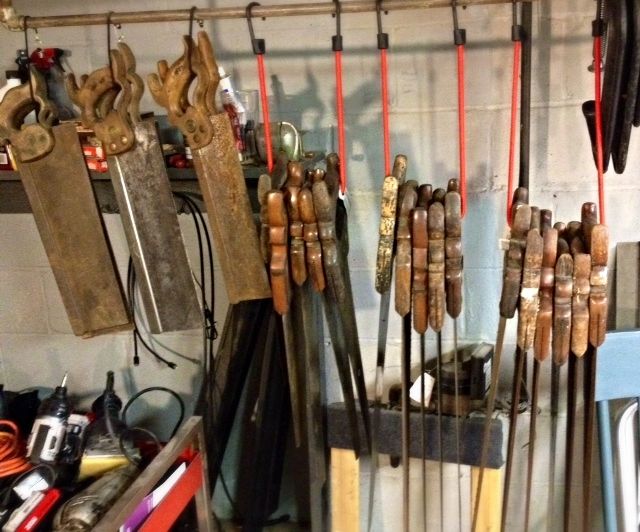I bought several Disston saws while out yardsailing with the wife. I am just getting into Neaderthaling (a verb???) and don't have the cash for new saws so we went the vintage route. Honestly, I didn't really do too much homework before I pick several up, but for a dollar or two, can you really go that wrong? I have been pleasantly surprised as I have cleaned them up. Here are the two I need advice on: I found I picked up an older D8 28" and the handle is in great shape. Here is the catch: there is a kink/curve in the blade and a corresponding tooth missing (see pictures) I know a missing tooth isn't the end of the world, but I am concerned as to whether the kink is a deal breaker. I know there are guys who will "saw smith" it straight for $30-40 plus shipping costs. The question is whether the saw is worth that level of expense or is this something to chalk up to experience?
D8 flat.jpgD8 curve.jpgD8 handle.jpgD8 tooth.jpg
The second saw is also an older Disston 12 (which is a good thing I think) at 24" and 10 tpi. As you can see in the photos the teeth (can you call them that anymore) aren't much there. Is this something a first time sharpener like myself can fix? Is it just a matter of jointing and refiling? As you guys can tell I am very new to all this, any wisdom would be greatly appreciated!
Dis12 teeth.jpg




 Reply With Quote
Reply With Quote


 OK, I am a little embarrassed: So I know I scored with the 12 and the D-8, I also picked (again for a dollar or two) an Acme 120. Appearently this is a good thing? The handle is in ok shape, the horn is broken off (but repairable). Is this another steal? And can they be sharpened? I read about the safety file, no set, etc.
OK, I am a little embarrassed: So I know I scored with the 12 and the D-8, I also picked (again for a dollar or two) an Acme 120. Appearently this is a good thing? The handle is in ok shape, the horn is broken off (but repairable). Is this another steal? And can they be sharpened? I read about the safety file, no set, etc.
